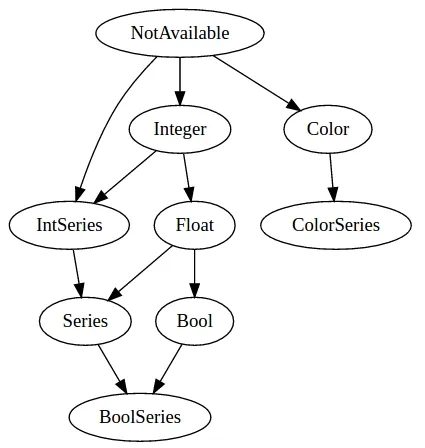Type system
The basic type of data in Pine is a list of values, named series.
Examples of built-in series variables are: open, high, low,
close, volume. The size of these vectors are equal to the quantity
of available bars based on the current ticker and timeframe
(resolution). The series may contain numbers or a special value na
(meaning that value is not available, further information about na
values can be found here).
Any expression that contains a series variable will be treated as a
series itself. For example:
Pine has two types to represent numbers: integer and float. The result of an arithmetical expression containing only numbers will be a number itself.
There is a string type which is used for the indicators names, inputs, line graphs, names of tickers, resolutions, trade sessions, etc.
Also Pine has a bool type. There are two built-in constants: true
and false.
And the last basic type is color. Apart from configuring a color value
directly with a literal (in hexadecimal format), in the language there
are more convenient, built-in variables of the type color. For basic
colors there are: black, silver, gray, white, maroon, red,
purple, fuchsia, green, lime, olive, yellow, navy, blue,
teal, aqua, orange. It is possible to change transparency of the
color using build-in function
color.
A few function annotations (in particular plot and hline) return
values which represent objects created on the chart. The function plot
returns an object of the type plot, represented as a line or diagram
on the chart. The function hline returns an object of the type
hline, represented as a horizontal line. These objects can be passed
to the
fill
function to color the area in between them.
Finally, there is also a void type in Pine Script. Some functions with side effect return void result. For example a strategy.entry.
Type cast rules
In the following picture arrow means ability to cast one type to
another. For example NotAvailable type (type of the na variable),
can be cast to any of color, integer, float or series types. But
color can only be casted to color series type.
